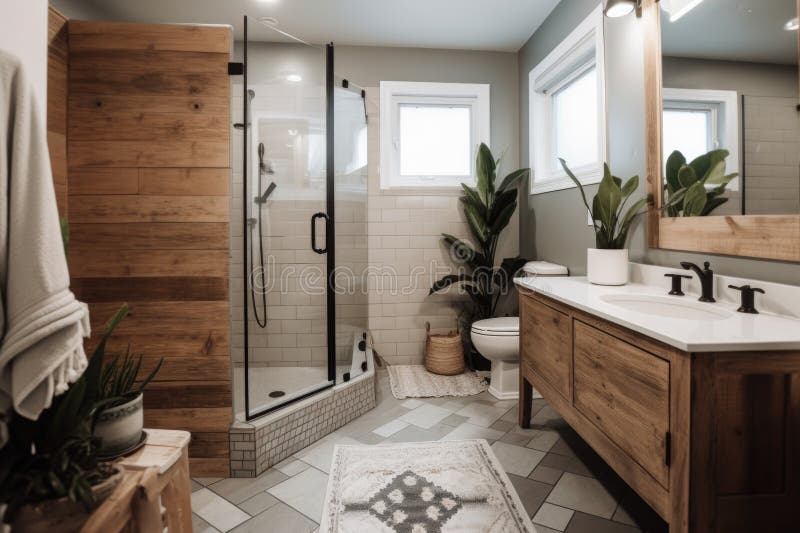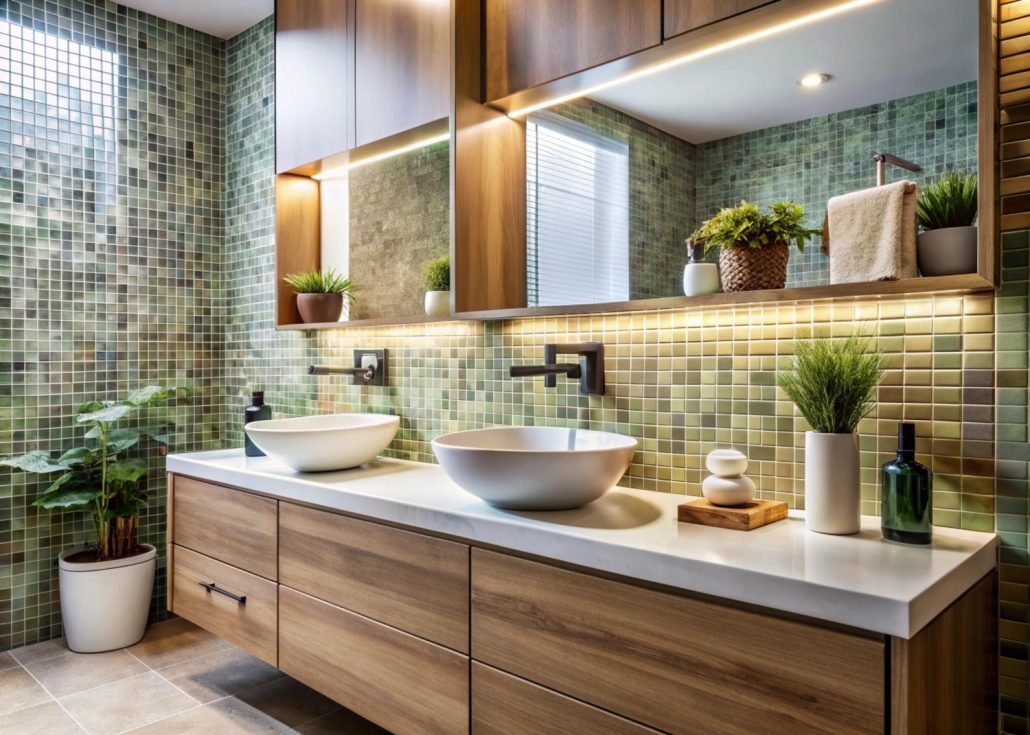
Install Bamboo Bathroom Flooring: A Smart And Eco-Friendly Choice
Are you considering a makeover for your bathroom? Opting to install bamboo bathroom flooring can be a transformative choice. Not only does this type of flooring bring a touch of nature into your home, but it’s also an environmentally friendly option for those seeking sustainable living solutions. As you embark on this journey, you’ll discover the numerous benefits and practical considerations involved in choosing bamboo flooring. Let’s explore how this eco-friendly flooring option can enhance your bathroom space.

The Appeal of Bamboo Flooring
Bamboo flooring is gaining popularity among homeowners for its unique blend of beauty, durability, and sustainability. Unlike traditional hardwood, bamboo is a type of grass that can be harvested without killing the plant, making it a renewable resource. This makes it a perfect choice for environmentally conscious homeowners looking to make a positive impact on the planet.
Benefits of Bamboo Flooring
When you install bamboo bathroom flooring, youre opting for a material that is both resilient and stylish. Bamboo is naturally resistant to moisture and stains, making it an excellent choice for bathrooms, where humidity levels can be high. Additionally, its natural resistance to insects and mold adds another layer of protection to your bathroom.
Another advantage is the aesthetic appeal of bamboo. With its sleek, modern look, bamboo flooring can complement a variety of interior design styles, from minimalist to traditional. Its natural color variations and grain patterns add warmth and texture to any bathroom.
Preparing for Installation
Before you begin the process to install bamboo bathroom flooring, preparation is key. Start with a thorough inspection of your current bathroom floor to ensure it is level and free from moisture issues. This step is crucial, as any existing water damage can affect the longevity and performance of your new bamboo flooring.
Choosing the Right Type of Bamboo Flooring
There are several types of bamboo flooring available, including solid, engineered, and strand-woven. Each type has its own set of characteristics and benefits. For bathroom installations, strand-woven bamboo is often recommended due to its increased density and resistance to water damage.
It’s also essential to consider the finish of the bamboo flooring. A waterproof finish will help protect the surface against spills and moisture, ensuring that your flooring remains in top condition for years to come.
Installation Process
Once you have selected your bamboo flooring, it’s time to move forward with the installation. While hiring a professional is always an option, many homeowners choose to tackle this project themselves. Here’s a step-by-step guide to help you get started:
Step 1: Gather Your Tools and Materials
Ensure you have all the necessary tools and materials, including bamboo planks, underlayment, a saw, adhesive, and a tape measure. Having everything on hand will streamline the installation process and help prevent delays.
Step 2: Acclimate the Bamboo
Before installation, allow the bamboo planks to acclimate to the bathroom’s humidity and temperature for at least 72 hours. This step helps prevent warping and ensures a perfect fit.
Step 3: Install the Underlayment
Lay down a moisture-resistant underlayment to serve as a barrier between the subfloor and the bamboo planks. This layer provides additional protection against moisture and helps reduce noise.
Step 4: Lay the Bamboo Planks
Begin laying the bamboo planks, starting from one corner of the bathroom and working your way across. Use adhesive to secure the planks in place, ensuring a tight fit with no gaps.
Step 5: Finishing Touches
Once all the planks are in place, apply a waterproof finish to the surface for added protection. This step will help maintain the bamboo’s natural beauty and prolong its lifespan.
Maintaining Your Bamboo Bathroom Floor
Proper maintenance is essential to keep your bamboo bathroom floor looking its best. Regular cleaning with a damp mop and a mild cleaning solution will help remove dirt and grime without damaging the surface.
Avoid using harsh chemicals or abrasive cleaning tools, as these can scratch or discolor the bamboo. Additionally, placing mats or rugs in high-traffic areas can help prevent wear and tear.
Dealing with Water Spills
Although bamboo is moisture-resistant, it’s important to clean up water spills promptly to prevent potential damage. Use a dry cloth to soak up any excess water and allow the area to dry thoroughly.
Why Choose Bamboo for Your Bathroom?
With its eco-friendly properties and stylish appearance, bamboo is an excellent choice for any bathroom renovation. It offers the perfect balance of durability, sustainability, and aesthetic appeal, making it a smart investment for your home.
For more insights on sustainable living, you might find this article on sustainable bathroom design helpful.

FAQ: Bamboo Bathroom Flooring
Is bamboo flooring suitable for bathrooms?
Yes, bamboo flooring is a great option for bathrooms due to its moisture resistance and durability.
How do I maintain bamboo bathroom flooring?
Regular cleaning with a damp mop and mild cleaner is recommended. Avoid harsh chemicals and ensure spills are cleaned promptly.
Can I install bamboo flooring myself?
Yes, with the right tools and preparation, bamboo flooring can be a DIY project. However, professional installation is also an option if preferred.
For more home improvement tips, consider checking out these resources on water-efficient bathroom fixtures and smart home hubs.
This article contains affiliate links. We may earn a commission at no extra cost to you.